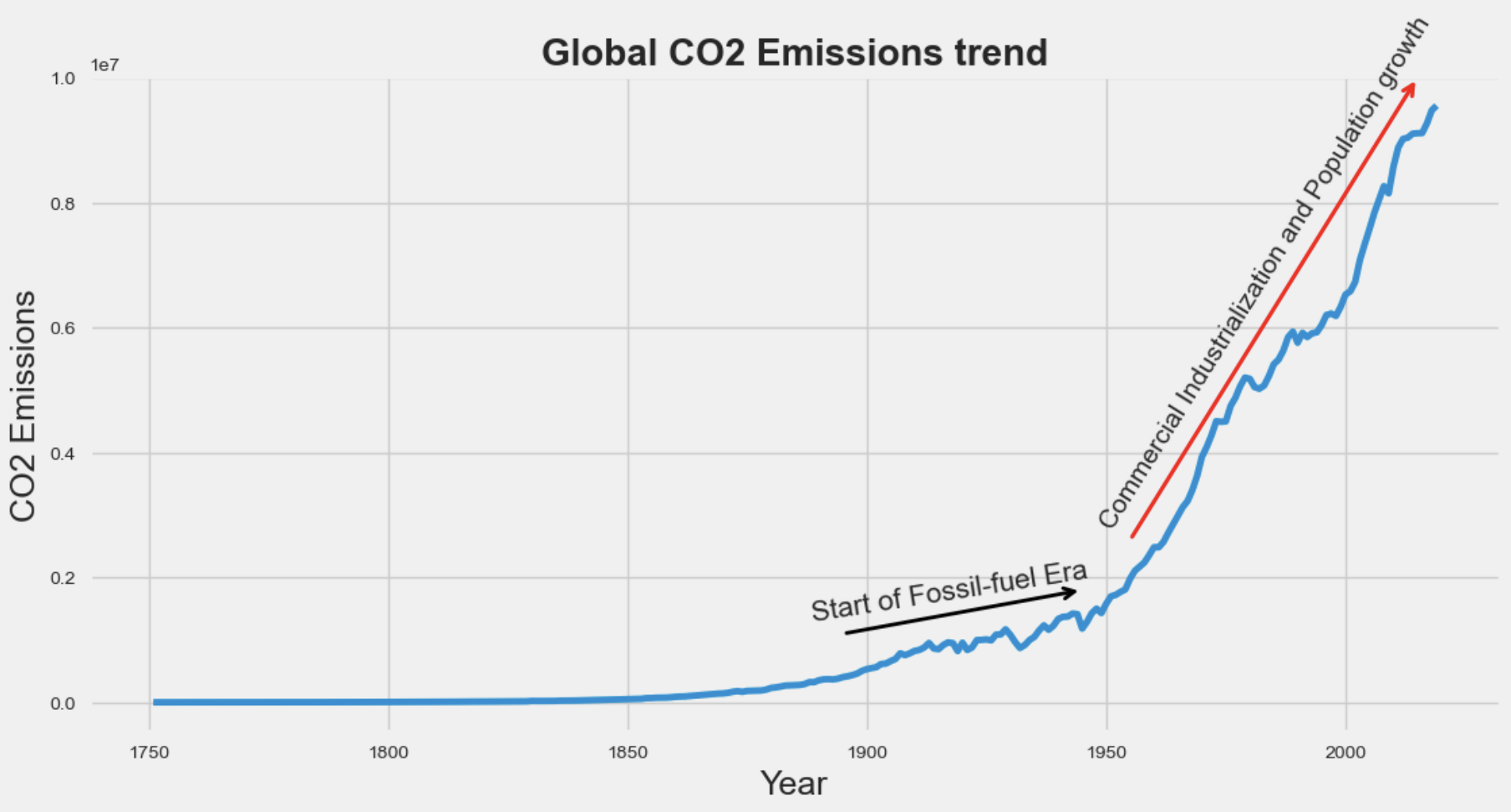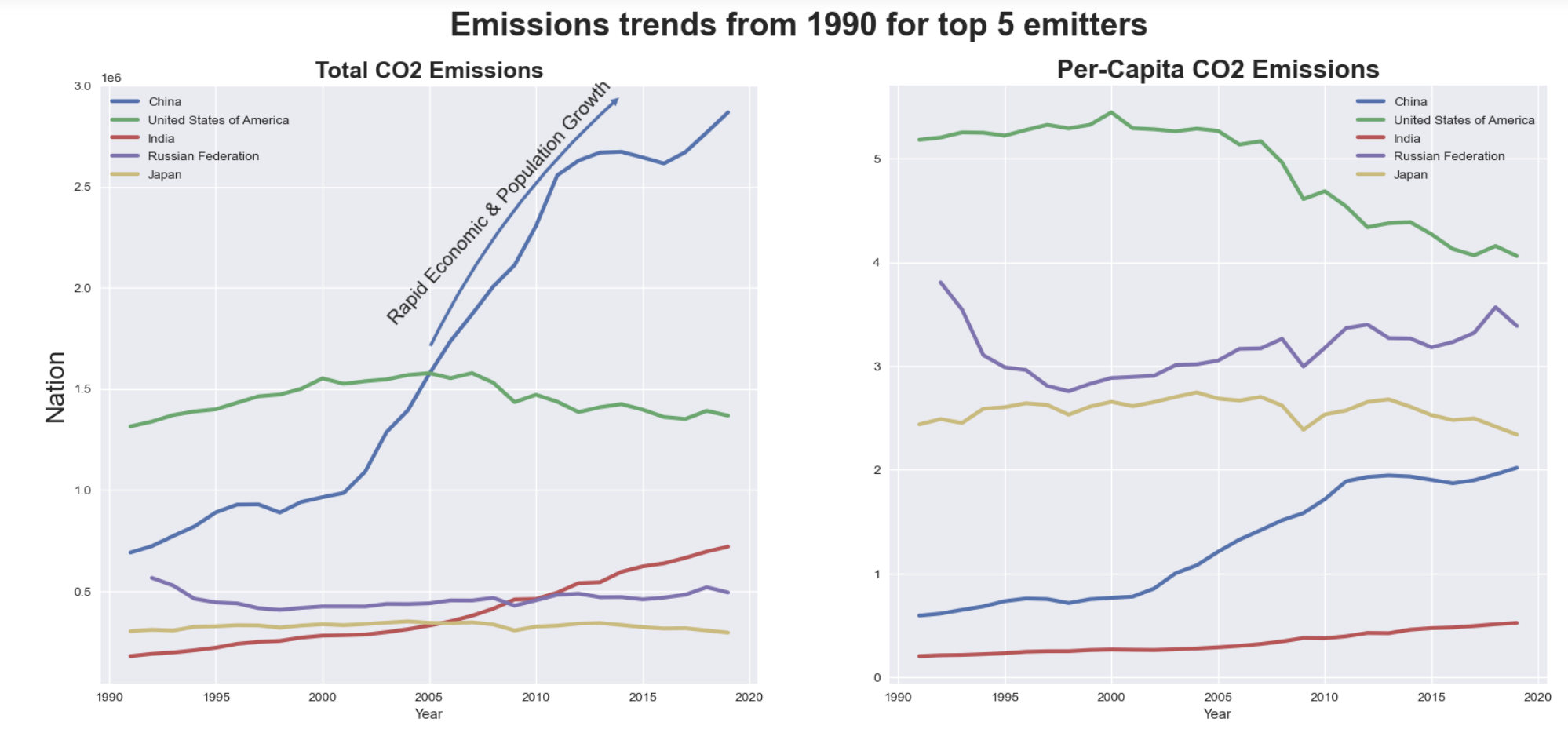The Ascent of Global CO2 Emissions
The image is a graphical representation of the historical trend of global carbon dioxide (CO2) emissions from the late 18th century to the early 21st century. In fig 1., a line graph shows a relatively flat line of emissions from around 1750 until the early 1900s, indicating low levels of CO2 emissions during this period. Thereafter, the line begins to ascend, with a noticeable increase starting in the early 20th century. The graph then shows a steep incline from around the 1950s onwards, with the line becoming almost vertical as it approaches the 2000s, reflecting a dramatic surge in emissions during this time. such as the start of the fossil-fuel era and the period of commercial industrialization and population growth. These periods are crucial to understanding the relationship between human industrial activity and the increase in CO2 emissions, which is a significant driver of climate change.

